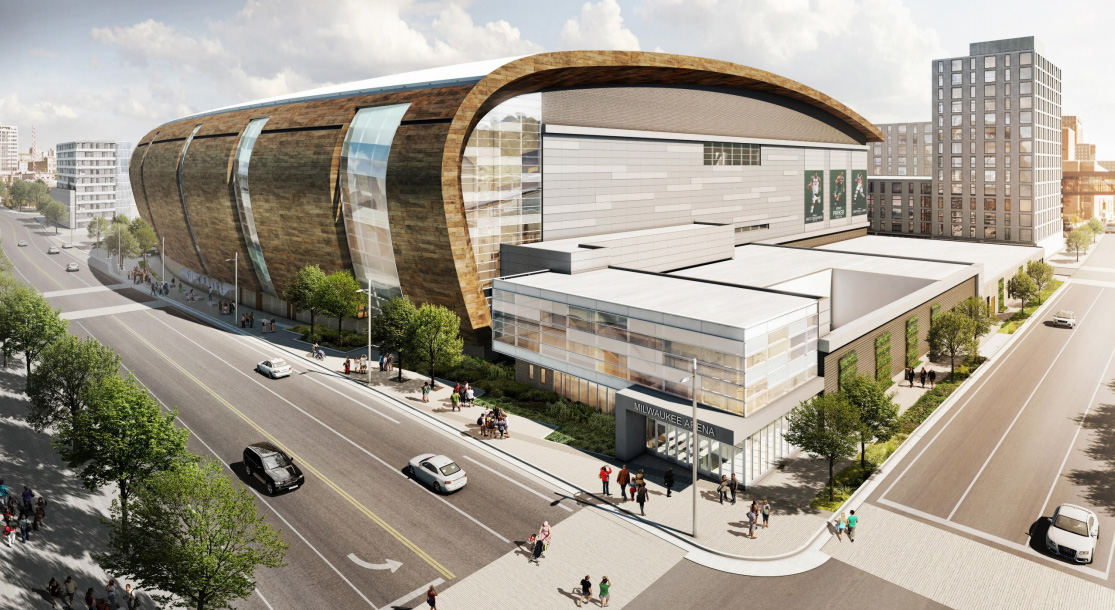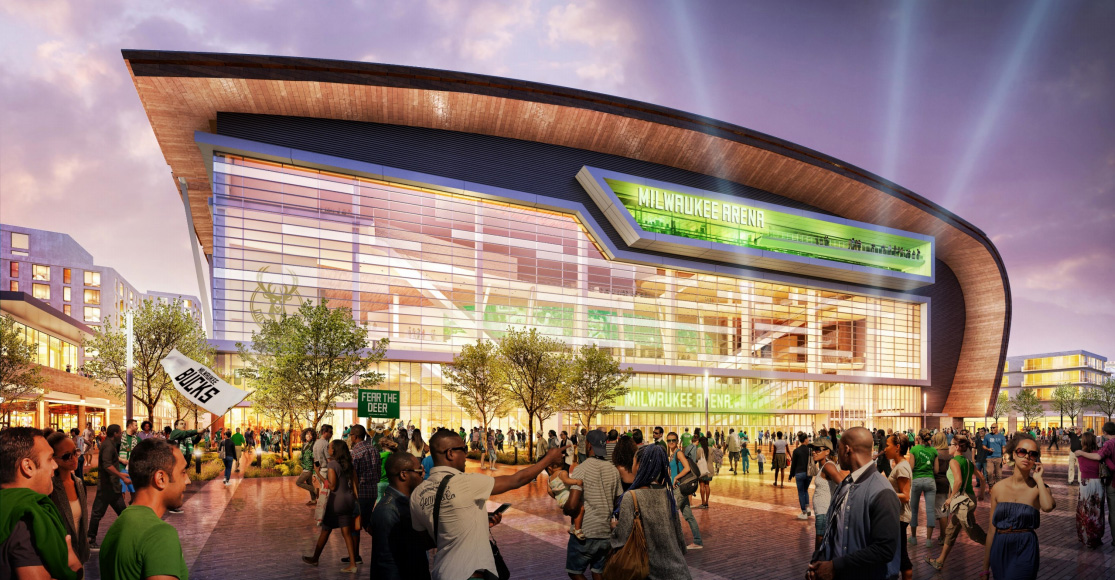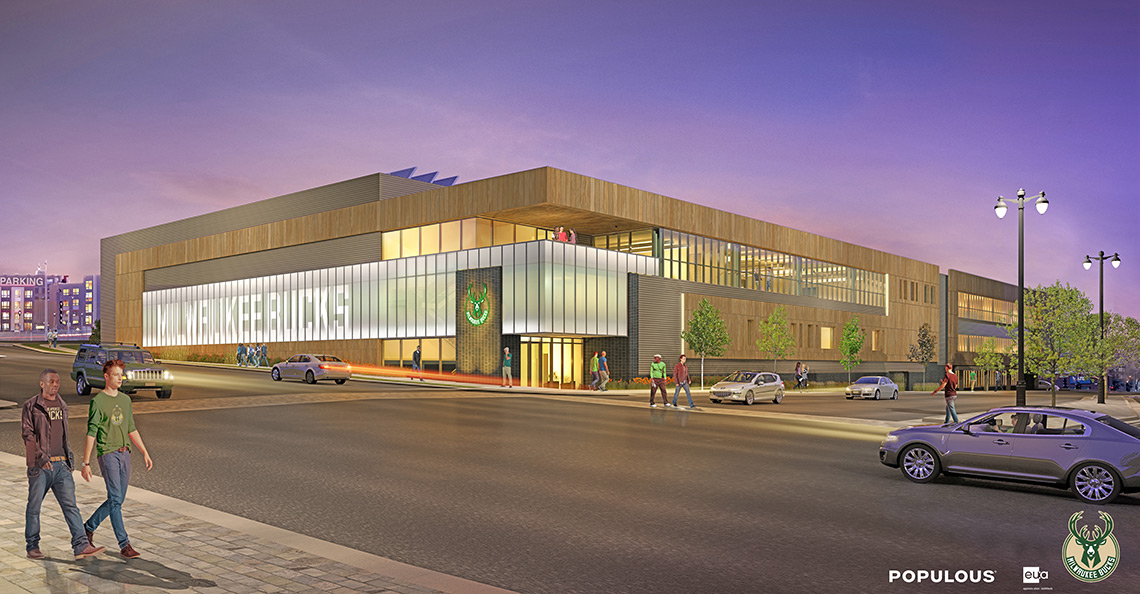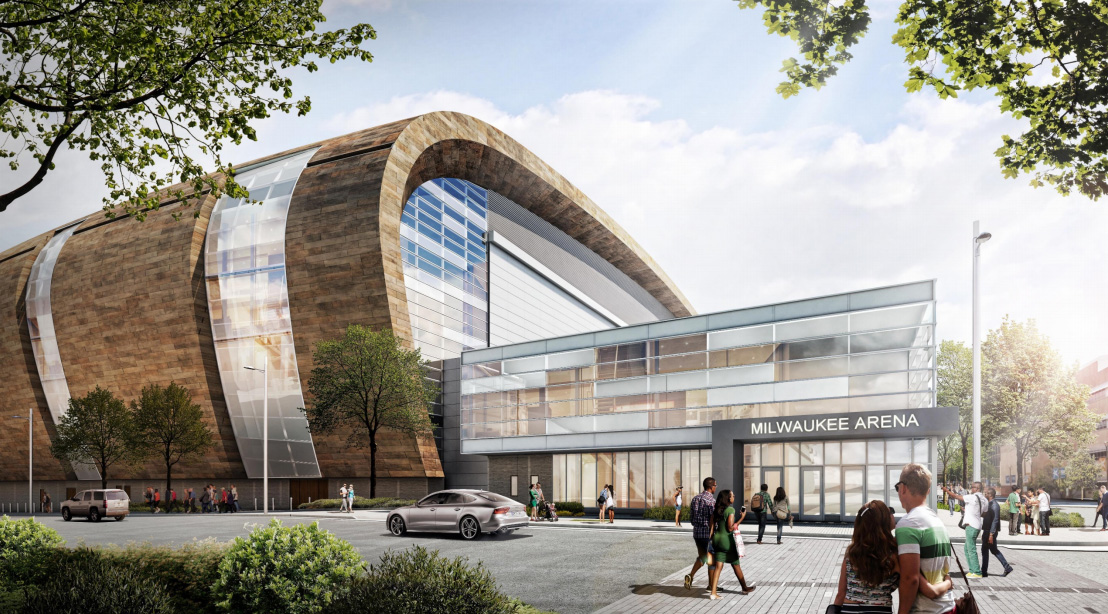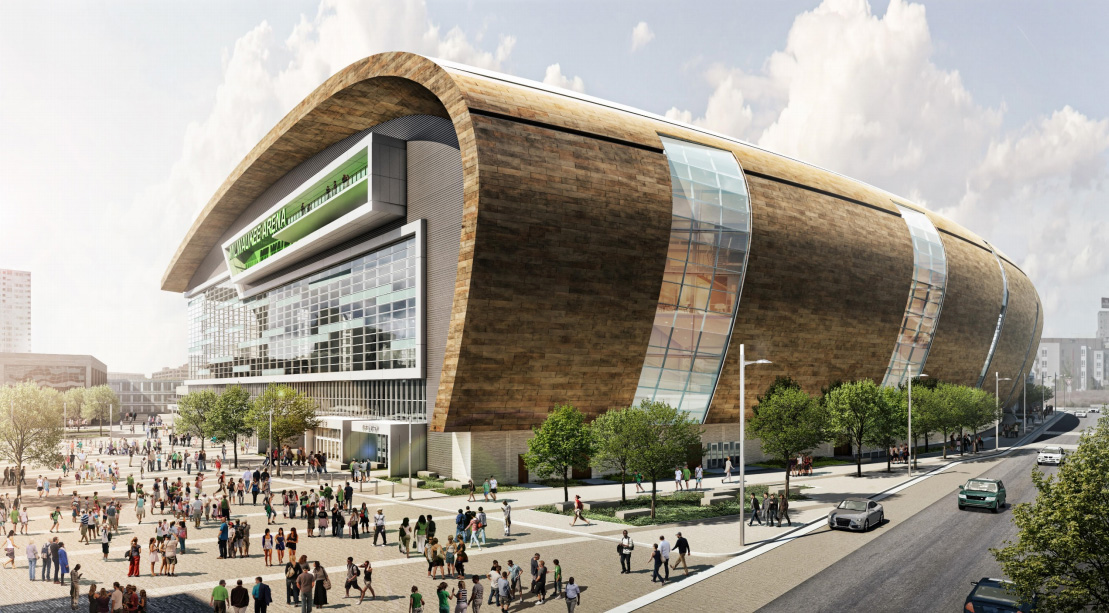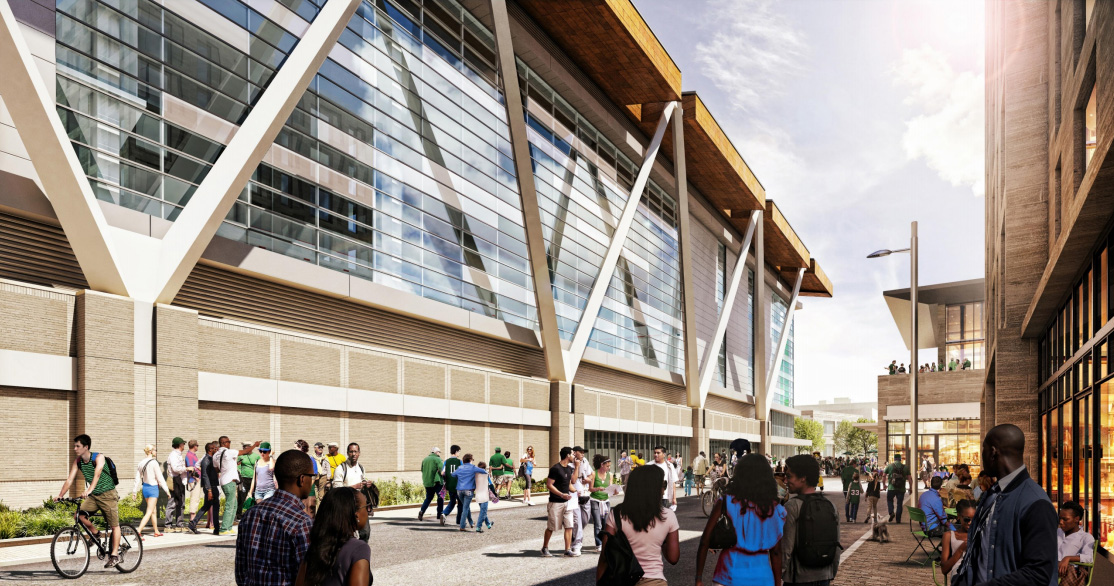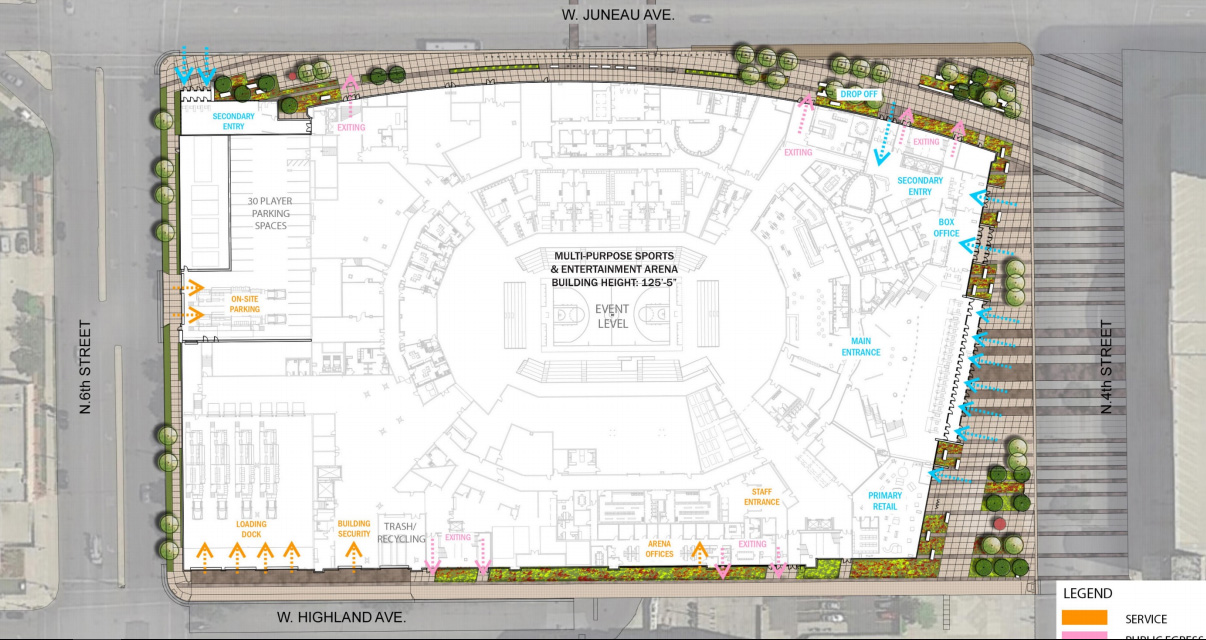As team ownership prepares for a groundbreaking Saturday on a new Milwaukee Bucks arena, the team will unofficially transition from running an NBA franchise to overseeing real-estate and facility development, joining the ranks of professional sports teams who see a sports facility as more than the stands surrounding the playing field.
The Bucks won’t be the only pro sports team to approach financing of a new facility as a real-estate play: Bruce Ratner approached the construction of Barclays Center, home of the NBA’s Brooklyn Nets, as part of the larger Atlantic Yards development; the Atlanta Braves have positioned SunTrust Park as the centerpiece of a much larger mixed-use environment; and the Detroit Red Wings are designing Little Caesars Arena as part of a a new arena and entertainment complex, explicitly as an economic-development tool.
There are some documented cases of a sports facility generating economic development — Petco Park has played a part in over a billion dollars in investment in San Diego’s Gaslamp District, Target Field has attracted investment in the surrounding Warehouse District, both from the Twins ownership (via the Pohlads’ real-estate-development firm, United Properties) and other developers, and Staples Center has been a revitalizing force in downtown Los Angeles — and plenty of other documented cases of sports facilities falling short on the development front (the Metrodome never spurred growth in downtown Minneapolis, for example).
But in the case of the Bucks, we’re seeing a more sophisticated approach to economic development with the new Milwaukee Bucks arena. On a basic level, funding for the new $524-million new arena falls in half between the team ($150 million), former team owner Sen. Herb Kohl ($100 million) and various government bodies. But it’s also being used as a lure for additional investment, as the team and elected officials anticipated at least $500 million more in private investment in the Park East corridor surrounding the arena. Interestingly, the public contribution was championed by the very conservative Wisconsin governor, Scott Walker, who made a succinct argument for the spending: “The return on investment is 3 to 1 on this, so we think this is a good, solid move as a good steward of the taxpayers’ money here in Wisconsin.”
This is a leap of faith, of course: the agreement reached by the team calls only for a commitment by the team owners to build an arena, a training facility (estimated to cost between $25 million and $30 million; shown above) and a $35 million parking ramp. Another leap of faith: the downtown Milwaukee Park East corridor has already seen some investment, and redevelopment at the old Schlitz brewery has accelerated in recent months. The new arena, combined with the promised development, could boost that growth even more. (What kind of development are the Bucks talking about? Retail, office, bars and restaurants.) An outdoor public plaza managed by the Bucks is foreseen as being a draw year-round and is designed to be the primary entrance to the arena and a 100-foot-high atrium. But don’t expect everything in the area to be constructed and completed by the time the arena opens for the 2018-2019 NBA season.
The design from Populous (along with Wisconsin firms Eppstein Uhen and HNTB) encompasses 714,000 square feet and will feature a handcrafted zinc patina exterior, with plenty of glass to let in natural light. The spacious design will allow fan to roam the arena or hit any of the four bars on the main concourse with a view of the bowl.
Getting back to the groundbreaking: a bipartisan group of elected officials will be joined by former Bucks greats Oscar Robertson and Sidney Moncrief (among others) and current team management to mark the occasion of construction at the site for a block party. If you’re interested: the 11:30 a.m. ceremony will be followed by the block party at the new-arena site.
Images courtesy Milwaukee Bucks and Populous. Click on the images for a larger version.
This article originally appeared in the weekly Arena Digest newsletter. Are you a subscriber? Click here to sign up for the free weekly newsletter.


